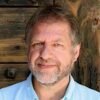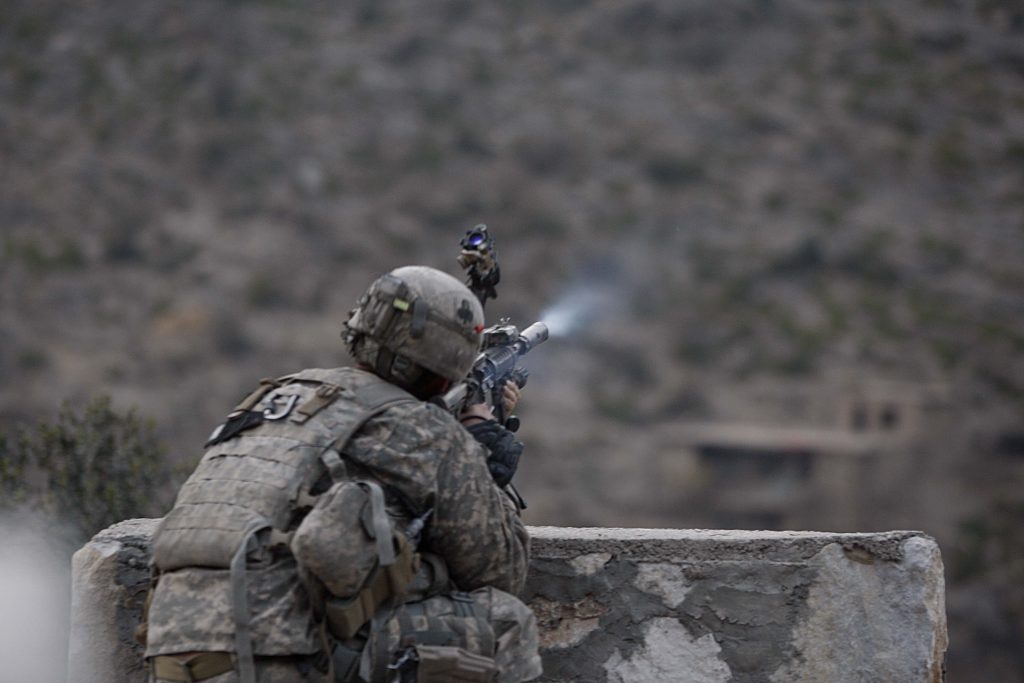Understanding Mass Killings
Media commentary on Micah Johnson, the African-American who killed five police officers in Dallas on July 7, has focused on his animus against white police and his interest in the Black Lives Matter movement, playing up the racial motivation for this mass shooting. But commentators have largely ignored another important element of Johnson’s identity that he shares in common with many other mass killers: military service.
This is not to say that America’s vexed racial politics were irrelevant to the Dallas shooting, or to other mass shootings. Just before he was blown up by a police robot, Johnson said that recent police killings of black citizens during traffic stops made him want to kill white police officers; and at least two other mass killers in recent years have also been motivated by racial animosity toward whites. In 1993, after Colin Ferguson killed six passengers on a Long Island commuter train, his initial lawyers argued that he was driven temporarily insane by “black rage” brought on by discrimination. And in 2012, Omar Thornton, a black employee of a beer distributor in Connecticut, killed eight workers there in retaliation for perceived racial discrimination.
There have also been racially targeted mass killings by white supremacists. Wade Michael Page was a white supremacist who killed six people at a Sikh temple in Wisconsin in 2012. And in 2015 Dylann Roof, another adherent of white nationalism, killed nine worshippers at a black Baptist church in South Carolina.
But a more common thread running through the biographies of America’s mass killers is current or former military service. Micah Johnson, the Dallas killer, had completed a tour of duty in Afghanistan, which, according to his parents, turned him from an extrovert into a “hermit.”
And the list of other mass killers with military backgrounds is impressively long: George Jo Hennard, who killed 22 in Killeen, Texas, in 1991 had served in the navy; Michael McDermott, who shot seven people in Wakefield, Massachusetts, in 2000, also served in the Navy; Robert Flores was a veteran of the Persian Gulf war who shot his three nursing professors in Tucson, Arizona, in 2002; in 2009, Major Nidal Malik Hasan, a U.S. Army psychiatrist, killed 13 when he went on a rampage at Fort Hood, Texas; Wade Michael Page, the white supremacist who killed six at a Sikh temple in Wisconsin, had served six years in the U.S. Army, where he became a psychological operations specialist; in 2012, Radcliffe Haughton, an ex-marine, killed three women, including his wife, at a spa in Wisconsin; in 2013, Aaron Alexis, another Navy veteran, killed twelve at the Washington Navy Yard; in 2014, Ivan Lopez-Lopez, an Iraq War veteran, killed three at Fort Hood in Texas; and, of course, Timothy McVeigh, whose truck bomb killed 168 in Oklahoma City in 1995, was a veteran of the Persian Gulf War.
There are obvious reasons why so many mass killers might be military veterans. They may have been drawn to the military in the first place by an attraction to violence. Once in the military, they are trained in the art of killing and, if they have combat experience, they may become disinhibited from killing. A New York Times report suggests that Dallas shooter Micah Johnson used skills he learned in the military to move rapidly across the terrain, evading return fire and giving the impression that there was more than one gunman. Military veterans may also suffer from post-traumatic stress disorder (PTSD), which is associated with social isolation, personality changes, and a lack of control over impulses. A recent study in the Annals of Epidemiology found that military veterans kill themselves at 1.5 times the rate of their civilian counterparts. (Interestingly, veterans who had not seen combat had a slightly higher suicide rate.) Although more veterans with PTSD take their own lives than kill others, military service is a risk factor for both homicide and suicide.
Mass killings are a kind of Rorschach inkblot in which people see what they fear, or what they want to see. Where some saw homophobia at work in the Orlando killings, others saw radical Islamic extremism. More generally, where some see inadequate mental health care as the root problem, others point the finger at the ease with which Americans can acquire guns. Some blame the Black Lives Matter movement for inciting Micah Johnson, while others blame pervasive police brutality against African-Americans for creating a situation that pushed him over the edge.
Although many mass killers have, of course, not been veterans, we need to ask ourselves why a disproportionate number have been.
But rarely do we focus on military service as a shared attribute among mass killers. Maybe this is, like inadequate Veterans Affairs health care, just another way in which we ignore soldiers and their problems once their service is done. Or maybe it is because rampaging veterans do not fit with our preferred narratives of soldiers as self-sacrificing heroes and of military service as a route to what the historian Richard Slotkin called “regeneration through violence.” In any case, although many mass killers have, of course, not been veterans, we need to ask ourselves why a disproportionate number have been.
George W. Bush once said that he took the U.S. to war in Iraq so that we could fight “over there” and not at home. It is an attractive fantasy that, by using the military to intervene in the Middle East, we can corral the violence there. But we are learning that a connected world does not work that way. Intervention “over there” generates terrorist attacks by angry Muslims in the capitals of Europe and in nightclubs and office buildings in the U.S. And the soldiers we send “over there,” to the land of violence, bring the war back with them. Many of our mass killings at home are a haunted shadow of our interventions abroad. We need to probe that shadow more deeply.
Correction: July 21, 2016
An earlier version of this article stated that military veterans kill themselves at twice the rate of their civilian counterparts. The correct number is 1.5 times the rate.

































